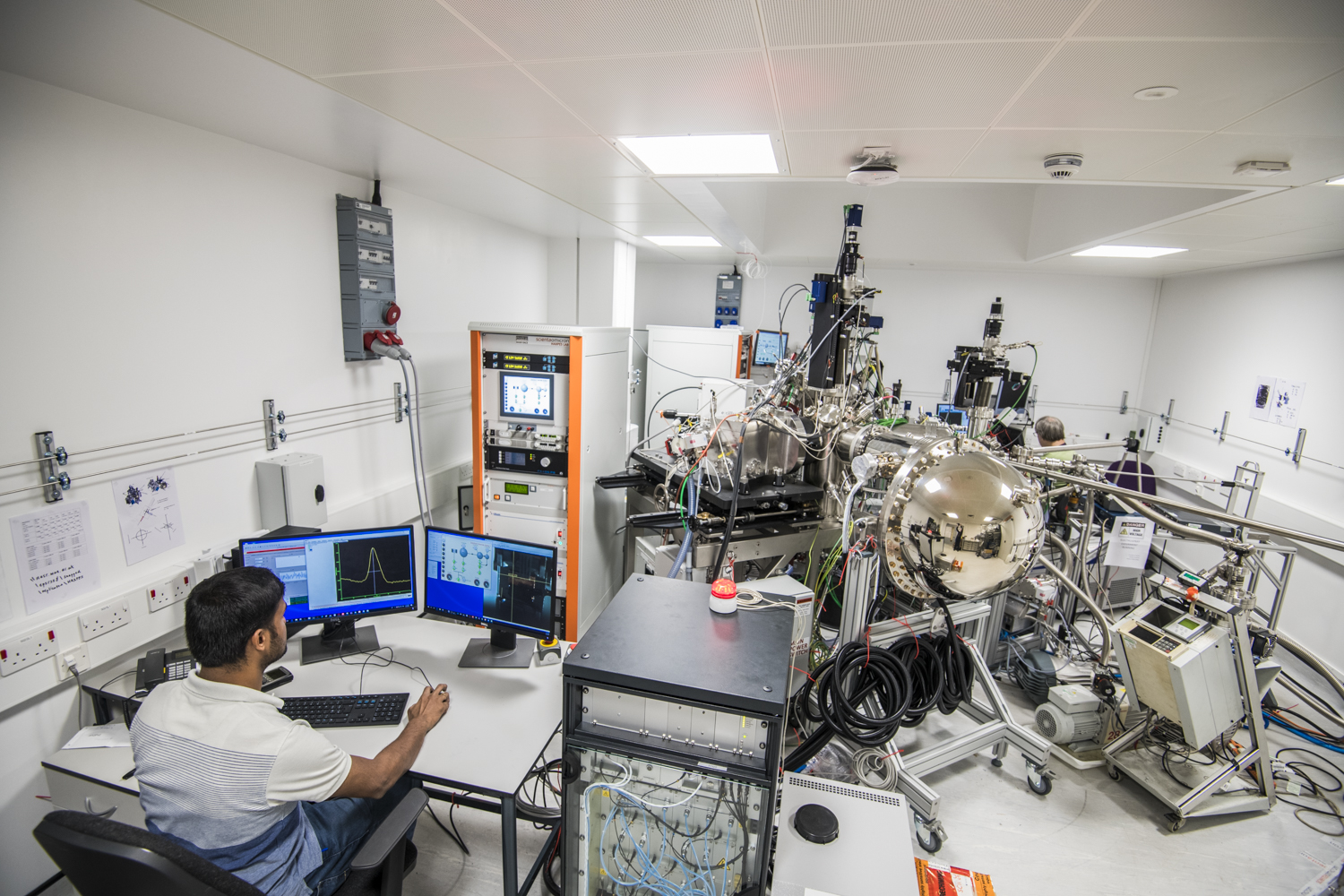The first publication from the unique Hard X-ray Photoelectron Spectroscopy facility has recently been published in a ground-breaking cross industry-academia collaborative project.
Hard X-ray Photoelectron Spectroscopy (HAXPES) uses high energy X-rays to measure the chemical composition in materials from the surface into the bulk non-destructively.
In 2019, the Henry Royce Institute secured the world’s first high throughput HAXPES Lab instrument from Scienta Omicron following a successful installation at The University of Manchester enabling fast HAXPES measurements in the laboratory using a high-intensity liquid metal-jet Gallium X-ray source (9.25 keV). Prior to this, HAXPES was mainly available at synchrotrons such as at the I09 beamline at Diamond Light Source, where work was carried out to help benchmark the lab system. Applications for advanced materials research are numerous and a number of projects are already in development aligning into Royce’s core research areas.
The initial paper, published in Applied Surface Science, provides the necessary standardisation, calibration and library of relative sensitivity factors (RSFs) for every accessible core level up to 9250 eV that are required from a new X-ray source for spectroscopy. A measurement of how deep below the surface the technique can now probe (a maximum sampling depth) has also be identified.
The publication brings together experience from Royce, Scienta Omicron, the National Physical Laboratory, and the University of Southern Denmark demonstrating the benefit of research collaborations with equipment specialist to deliver technology advancements for surface science analysis.
It is now clear that inelastic background modelling can routinely probe hundreds of nanometres below the surface and calculation of RSFs for every element is now enabled for the lab system. The publication was led by Dr Ben Spencer, Dr Alex Shard, and Professor Wendy Flavell and delivers significant advancement for HAXPES and the international materials community.
Professor Wendy Flavell, Professor of Surface Physics and the Vice Dean for Research in the Faculty of Science and Engineering at The University of Manchester, says,
“We were delighted to secure the world’s first HAXPES Lab system from Scienta Omicron in Royce, and this work demonstrates its capability and, importantly, helps to standardise the technique so it can be applied to world-leading advanced materials science.”
Dr Ben Spencer, Senior Experimental Officer at Royce, said,
“This work shows just how far into the surface we can look using high energy X-rays non-destructively. It’s an important step towards the HAXPES Lab becoming a black-box tool, and in Royce we have already applied HAXPES to measure a wide range of important materials– watch this space.”
Dr Alex Shard, Principal Research Scientist and Head of Science for the Chemical and Biological Science Department at the National Physical Laboratory, said:
“It has been a great pleasure to work with Royce, the University of Manchester, Scienta Omicron and the University of Southern Denmark in this ongoing HAXPES metrology project. The number of HAXPES instruments around the world is rapidly increasing, as is the demand for reliable and meaningful measurements. In the near future we plan to develop the metrology for lab-based HAXPES instruments enabling instrument calibration, accurate measurements and algorithms for faster and easier data analysis.”
Professor Sven Tougaard, Institute of Physics, Chemistry, and Pharmacy, University of Southern Denmark, said:
“Excited to participate in this work and to find how lab-based HAXPES combined with analysis of the inelastic background opens up for non-destructive characterization of deeply buried nano-structures.”
Scienta Omicron CEO Johan Åman said:
“We are very proud to have worked closely with the researchers of this paper. The development of relative sensitivities factors for the gallium source is important for moving what was a novel technique towards a standard technique. We expect that the HAXPES Lab will enable a wide range of experiments to be completed by users into the future, all while being in their home lab”.
Read the full paper, ‘Inelastic background modelling applied to Hard X-ray Photoelectron Spectroscopy of deeply buried layers: a comparison of synchrotron and lab-based (9.25 keV) measurements,’ with open access, here: https://doi.org/10.1016/j.apsusc.2020.148635
QUASES Masterclass with Professor Sven Tougaard
Royce will be hosting an online masterclass in XPS background modelling with Prof Sven Tougaard from University of Southern Denmark on 3 February 2021. Click here for details.



